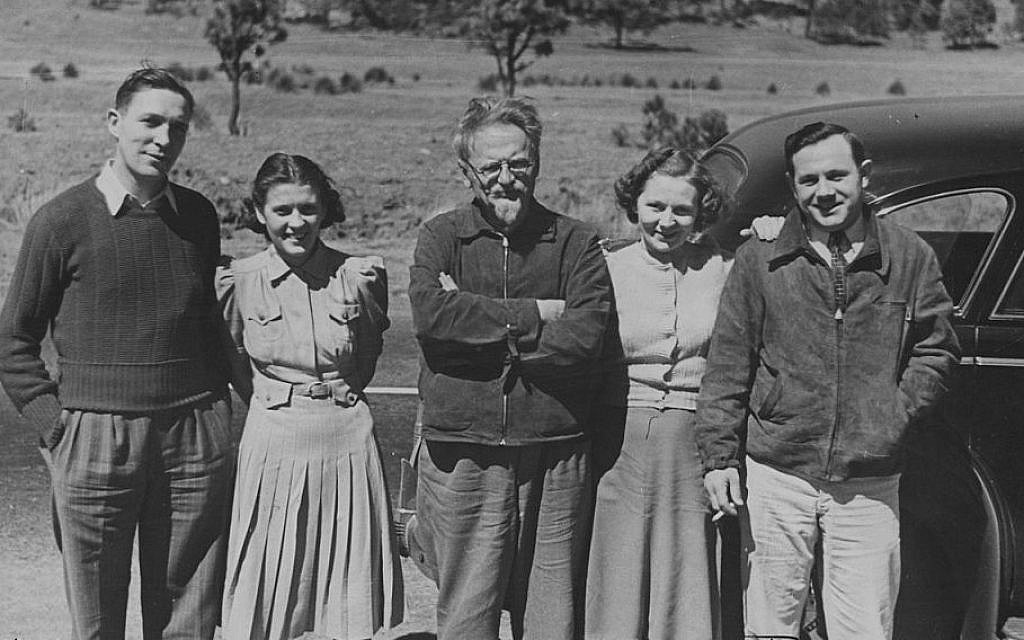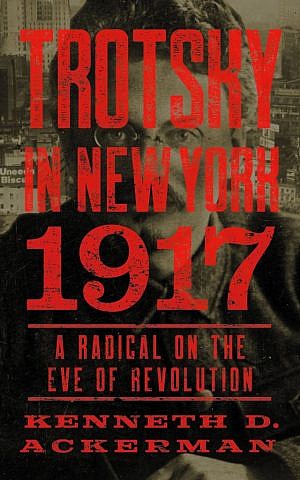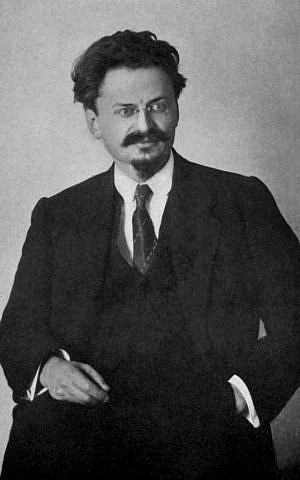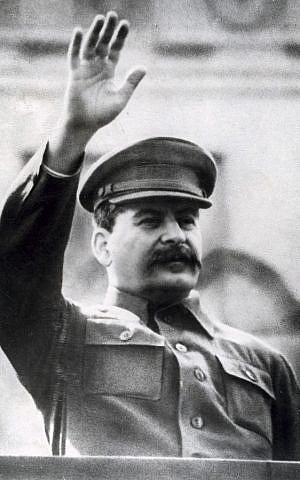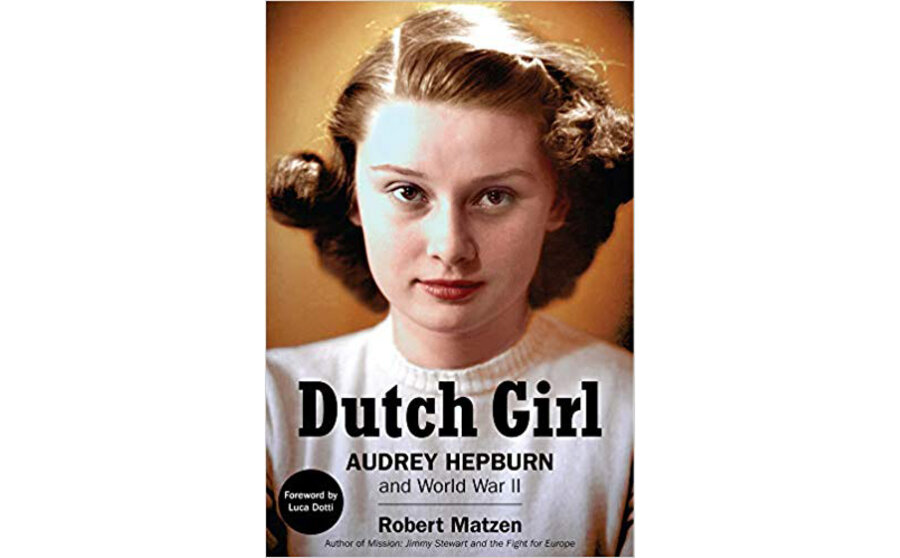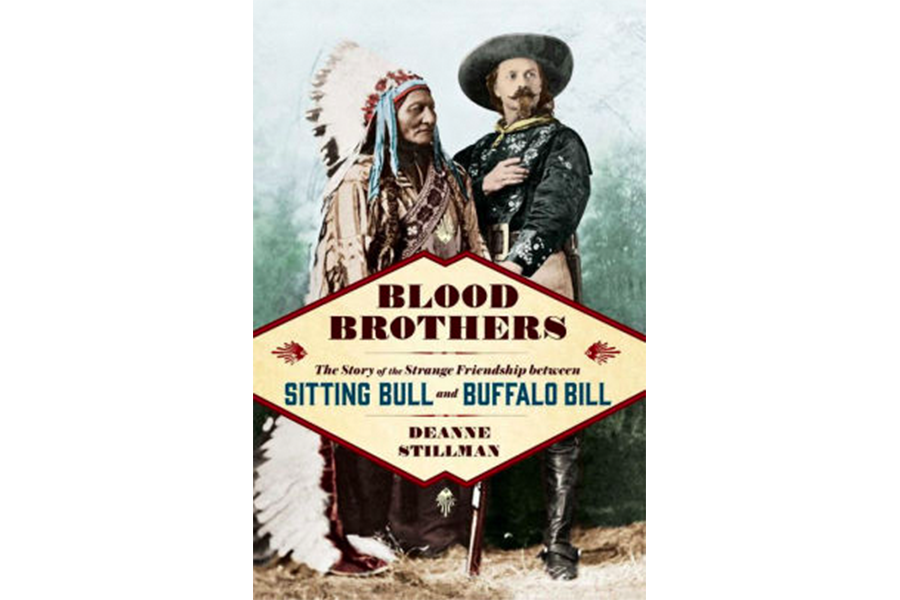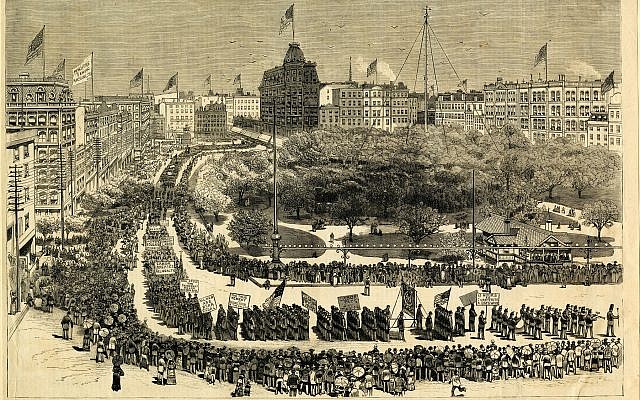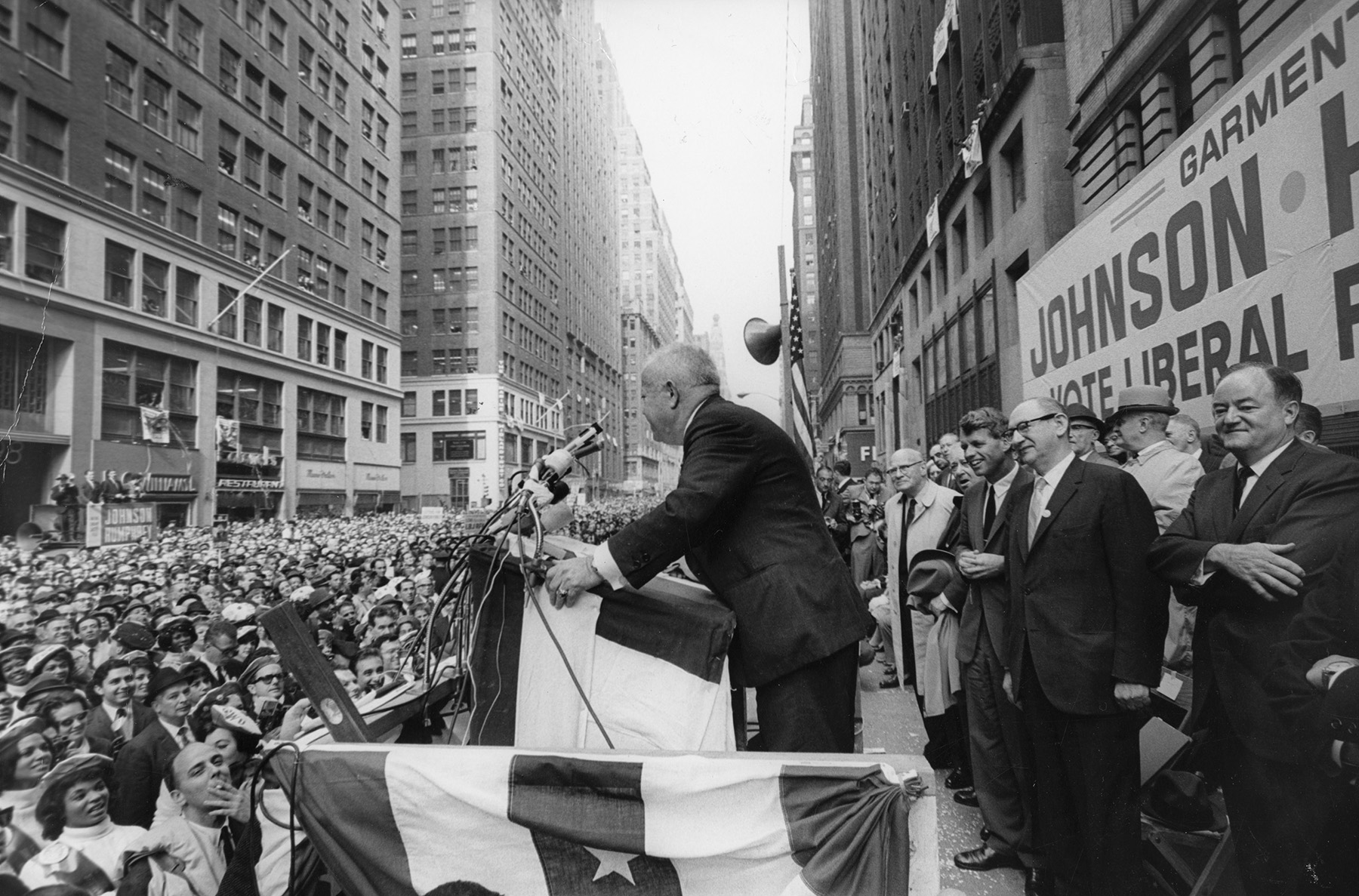NOTHING IS TRUE, EVERYTHING IS PERMITTED
Alamut (Bartol novel) - Wikipedia
https://en.wikipedia.org/wiki/Alamut_(Bartol_novel)
Alamut is a novel by Vladimir Bartol, first published in 1938 in Slovenian, dealing with the story ... The maxim of the novel is "Nothing is an absolute reality; all is permitted". ... and the phrase from the novel under an alternative translation: "nothing is true; everything is permitted" is the guiding principle of the game's Order of ...
NOT PUBLISHED IN ENGLISH TILL 2004!
HERE IT IS AS A PDF TO DOWNLOAD https://archive.org/details/AlamutVladimirBartol Alamut is a novel by Vladimir Bartol, first published in 1938 in Slovenian, dealing with the story of Hassan-i Sabbah and the Hashshashin, and named after their Alamut fortress. Bartol first started to conceive the novel in the early 1930's, when he lived in Paris. In the French capital, he met with the Slovene literary critic Josip Vidmar, who introduced him to the story of Hassan-i Sabbah. A further stimulation for the novel came from the assassination of Alexander I of Yugoslavia perpetrated by Croatian and Bulgarian radical nationalists, on the alleged commission of the Italian Fascist government. When it was originally published, the novel was sarcastically dedicated to Mussolini. The maxim of the novel is "Nothing is an absolute reality, all is permitted". This book was one of the inspirations for the video game series Assassin's Creed.
FROM THE NOVEL INTRO Alamut was originally written in 1938 as an allegory to Mussolini’s fascist state. In the 1960s it became a cult favorite throughout Tito’s Yugoslavia, and in the 1990s, during the war in the Balkans, it was read as an allegory of the region’s strife and became a bestseller in Germany, France, and Spain. The book once again took on a new life following the attacks of 9/11/2001 because of its early description of the world of suicide bombers in fanatical sects, selling more than 20,000 copies in a new Slovenian edition. “First published sixty years ago, Alamut is a literary classic by Slovenian writer VladimirBartol, a deftly researched and presented historical novel about one of the world’s firstpolitical terrorists, eleventh-century Ismaili leader Hasan ibn Sabbah, whose machinations with drugs and carnal pleasures deceived his followers into believing that he would deliver them to a paradise in the afterlife, so that they would destroy themselves in suicide missionsfor him. Flawlessly translated into English (and also published in eighteen other languages), Alamut portrays even the most Machiavellian individuals as human—ruthless or murderous, but also subject to human virtues, vices, and tragedies. An afterword by Michael Biggins offering context on the author’s life, the juxtaposition of his writing to the rise of dictatorial conquest that would erupt into World War II, and the medley of reactions to its publication, both in the author’s native Slovenia and worldwide, round out this superb masterpiece. An absolute must-have for East European literature shelves, and quite simply a thoroughly compelling novel cover to cover.” —Midwest Book Review
The Creed | Assassin's Creed Wiki | FANDOM powered by Wikia https://assassinscreed.fandom.com/wiki/The_Creed The exact phrase "Nothing is true; everything is permitted" was taken from the novel Alamut by Vladimir Bartol, a book that served as a primary inspiration for Assassin's Creed.
Urban Dictionary: Nothing is true, Everything is permitted.
https://www.urbandictionary.com/define.php?...Nothing%20is%20true%2C%20Every... To say that nothing is true, is to realise that the foundations of society are fragile, and that we must be the shepherds of our own civilization.
NOT PUBLISHED IN ENGLISH TILL 2004!
HERE IT IS AS A PDF TO DOWNLOAD https://archive.org/details/AlamutVladimirBartol Alamut is a novel by Vladimir Bartol, first published in 1938 in Slovenian, dealing with the story of Hassan-i Sabbah and the Hashshashin, and named after their Alamut fortress. Bartol first started to conceive the novel in the early 1930's, when he lived in Paris. In the French capital, he met with the Slovene literary critic Josip Vidmar, who introduced him to the story of Hassan-i Sabbah. A further stimulation for the novel came from the assassination of Alexander I of Yugoslavia perpetrated by Croatian and Bulgarian radical nationalists, on the alleged commission of the Italian Fascist government. When it was originally published, the novel was sarcastically dedicated to Mussolini. The maxim of the novel is "Nothing is an absolute reality, all is permitted". This book was one of the inspirations for the video game series Assassin's Creed.
FROM THE NOVEL INTRO Alamut was originally written in 1938 as an allegory to Mussolini’s fascist state. In the 1960s it became a cult favorite throughout Tito’s Yugoslavia, and in the 1990s, during the war in the Balkans, it was read as an allegory of the region’s strife and became a bestseller in Germany, France, and Spain. The book once again took on a new life following the attacks of 9/11/2001 because of its early description of the world of suicide bombers in fanatical sects, selling more than 20,000 copies in a new Slovenian edition. “First published sixty years ago, Alamut is a literary classic by Slovenian writer VladimirBartol, a deftly researched and presented historical novel about one of the world’s firstpolitical terrorists, eleventh-century Ismaili leader Hasan ibn Sabbah, whose machinations with drugs and carnal pleasures deceived his followers into believing that he would deliver them to a paradise in the afterlife, so that they would destroy themselves in suicide missionsfor him. Flawlessly translated into English (and also published in eighteen other languages), Alamut portrays even the most Machiavellian individuals as human—ruthless or murderous, but also subject to human virtues, vices, and tragedies. An afterword by Michael Biggins offering context on the author’s life, the juxtaposition of his writing to the rise of dictatorial conquest that would erupt into World War II, and the medley of reactions to its publication, both in the author’s native Slovenia and worldwide, round out this superb masterpiece. An absolute must-have for East European literature shelves, and quite simply a thoroughly compelling novel cover to cover.” —Midwest Book Review
The Creed | Assassin's Creed Wiki | FANDOM powered by Wikia https://assassinscreed.fandom.com/wiki/The_Creed The exact phrase "Nothing is true; everything is permitted" was taken from the novel Alamut by Vladimir Bartol, a book that served as a primary inspiration for Assassin's Creed.
Urban Dictionary: Nothing is true, Everything is permitted.
https://www.urbandictionary.com/define.php?...Nothing%20is%20true%2C%20Every... To say that nothing is true, is to realise that the foundations of society are fragile, and that we must be the shepherds of our own civilization.
CHECK OUT ROBERT ANTON WILSON AND ROBERT SHEA
ILLUMINATUS TRILOGY AND EACH WRITERS BOOKS FOR FURTHER REFERENCES TO HASAN IBN SABBAH AND HIS MOTTO NOTHING IS TRUE, EVERYTHING IS PERMITTED
ILLUMINATUS EXCERPT https://www.penguinrandomhouse.ca/books/165363/the-illuminatus-trilogy-by-robert-shea-and-robert-anton-wilson/9780440539810/excerpt
ALSO SEE WILLIAM BURROUGHS WHO USES THIS PHRASE IN HIS BOOKS Author William S. Burroughs found fascination within the story of Hassan-i-Sabbah and included the motto, "Nothing is true; everything is permitted", and many references to the work in his 1959 post-modern novel, Naked Lunch and The Nova Express. https://en.wikipedia.org/wiki/Alamut_(Bartol_novel)
Retaking The Universe: William S. Burroughs in the Age of Globalization
http://cdn.realitystudio.org/images/covers_other/retaking_the_universe/retaking-the-universe.pdf
ALSO SEE WILLIAM BURROUGHS WHO USES THIS PHRASE IN HIS BOOKS Author William S. Burroughs found fascination within the story of Hassan-i-Sabbah and included the motto, "Nothing is true; everything is permitted", and many references to the work in his 1959 post-modern novel, Naked Lunch and The Nova Express. https://en.wikipedia.org/wiki/Alamut_(Bartol_novel)
Retaking The Universe: William S. Burroughs in the Age of Globalization
http://cdn.realitystudio.org/images/covers_other/retaking_the_universe/retaking-the-universe.pdf
Introduction—"Nothing Is True, Everything Is Permitted"
https://publishing.cdlib.org/ucpressebooks/view?docId=ft0580030m;chunk.id=0;doc.view=print
This study attempts to articulate an alternative to the dialectic of modernism and postmodernism, or (post)modernism for short, that dominates many discussions of American literature in the contemporary period. Such an alternative has already emerged at many points in the development of that literature, only to be misrecognized and recuperated within the dominant mode of reflexive postmodern writing by critics who have apparently been too dazzled by the postmodern and post-structural "ruptures" to see clearly. An alternative to (post)modernism in fact emerges at precisely the same aesthetic moment that the dominant or reflexive form of postmodernism does, in one of its key texts: Ralph Ellison's Invisible Man . Like Ellison's narrator, this alternative has remained largely invisible, despite its very real difference from its dominant counterpart, for many of the same reasons the narrator could not be seen by members of the dominant white culture. Unlike Ellison's canonical book, however, the major texts of this alternative form have only intermittently been recognized for their contributions to the state of contemporary cultural production, and these texts have not yet given rise to an adequate theoretical alternative to (post) modernism. Questions of cultural identity and otherness, of representation and materiality raised by Ellison's novel will help us begin to recognize and theorize this alternative as it takes shape in the novels of William S. Burroughs.
The explicit theoretical elaboration of alternatives to (post)modernism has begun recently in disciplines other than literary criticism, such as the sociology of Bruno Latour (who calls it "nonmodernism")[1] and the political philosophy of Antonio Negri (who calls it "anti-modernity").[2] These particular elaborations derive from the philosophical work of Gilles Deleuze, whose original insights and analyses have produced a critical language that evades the endless squabbling over terminology that marks most discussions of (post) modernism; this evasion also accounts in part for Deleuze's own relative "invisibility" in Anglo-phone critical circles. To make my own project more visible, I have chosen to call my version of the phenomenon amodernism to highlight what seems to me to be its distance from and resistance to the dialectical structure that defines (post) modernism; perhaps it would help to think of it as a heterogeneous third term, like "amoral" in relation to "moral" and "immoral." Amodernism, like the reflexive postmodernism we already recognize, accepts the failure of modernist ends (for instance, the resolution of gender, class, and ethnic conflicts and the concomitant spiritual unification of society) and means (for instance, the regeneration of myth as a centering structure), without taking the additional step of homogenizing all remaining difference into some version of Ferdinand de Saussure's negatively defined linguistic paradigm.[3] In other words, from an amodern point of view the disavowal of mass politics endorsed by Jean-François Lyotard's or Jean Baudrillard's postmodernism is not adequate, since that disavowal remains complicit with capital because it offers no way out of the system of domination that constitutes the present social order. The failure of a specific set of critical and resistant strategies, even strategies as far-reaching and apparently unsurpassable as those deployed under modernism, does not necessarily imply the failure of all such strategies, nor does the "closure of Western metaphysics" require us to jettison every point of our irreducible cultural histories.
This failure and this closure are not inevitable, but rather had to be produced, just as alternatives to them have been and continue to be produced. The task of this study is to trace an alternative trajectory through the literature and history of the contemporary period, a trajectory that participates in the production of new cultural values to replace those that (post)modernism has bankrupted and in so doing gives leverage to the kinds of theoretical writing that Deleuze, Negri, and Latour undertake. This trajectory maps the career of the American writer and artist William S. Burroughs, whose commitment to social transformation in the face of the postmodern evacuation of the political sphere is emblematic, I would claim, of literary amodernism in general. Amodern writers are better known than amodern theorists, though as a result of this notoriety they suffer for their "failures" to meet the criteria defined by the reflexive, formalist strain of postmodernism. From the point of view of this reflexive postmodernism, amodern writers are either lax in their compositional methods or misguided in their political commitments; both of these criticisms have been leveled, by critics and by other novelists, at Burroughs. Amodern literature, if we accept for the moment the bald assertion that it exists, develops from Ellison's promise to emerge from the liminal space of literature with a "plan of living" rather than an endlessly deferred "participation in language games" or an empty "love for the world through language" à la John Barth.
Nothing Is True, Everything Is Permitted : Nietzsche and Dostoevsky https://www.peterlang.com/view/9783035193411/chapter18.xhtml Extract The maxim “nothing is true, everything is permitted” (Nichts ist wahr, Alles ist erlaubt), which was the watchword of the Order of Assassins, an Islamic sect dating from the eleventh to the thirteenth century A.D,202 appears in the fourth part of Zarathustra and in the second essay of the Genealogy of Morality.203 Among the posthumous fragments, this sentence can be found few times in the notebooks of 1884 and ’85.204 As early as 1936, Jaspers (1997 [1936]: 227) warned Nietzsche scholars against the facility with which this maxim could be falsely interpreted: “When removed from context, such a statement – often repeated by Nietzsche – is unintelligible. Taken by itself it expresses complete lack of obligation; it is an invitation to individual caprice, sophistry, and criminality.” In the next sections, I will follow Jaspers’ warning and examine the meaning of Nietzsche’s maxim, inserting it both in its particular (the aphorism and the posthumous fragments in which it appears) and in its wider context (Nietzsche’s philosophy and, more specifically, his position on morality). ← 169 | 170 → 2.1 Zarathustra’s Shadow The sentence “nothing is true, everything is permitted” appears for the first time in the oeuvre in Zarathustra’s speech The Shadow.205 The protagonist of this speech, Zarathustra’s shadow, is portrayed by Nietzsche as “thin, blackish, hollow and outdated.” (Z IV, The Shadow) To Zarathustra, who asks him who he is, the shadow answers that he is “a wanderer, who has already walked much at your heels; always on...
“Nothing is True, Everything is Permitted”. Vladimir Bartol’s Novel “Alamut” – Belated Entry in the Modern Balkan Context
Malamir Spasov
https://www.academia.edu/34615461/_Nothing_is_True_Everything_is_Permitted_._Vladimir_Bartol_s_Novel_Alamut_Belated_Entry_in_the_Modern_Balkan_Context
" Alamut " (1938) is a novel by Vladimir Bartol (1903-1967) – Slovene author from Trieste. It has been defined as both " marginal literature " and " brilliantly written work ". However, only in the 1980s and 1990s Bartol's novel became the most internationally successful and bestselling work of Slovene literature, partly due to its strangely contemporary relevance. And yet there has been surprisingly little comparison between " one of the most original works of Slovene literature " and the modernistic literary creativity of contemporaries of Bartol's generation elsewhere in Southeast Europe – for instance authors such as Bulgarian Boris Shivachev, Romanians Camil Petrescu, Anton Holban and Mircea Eliade, and even Serbian Miloš Crnjanski. Regrettably, " Alamut " is not translated in Bulgarian or Romanian yet. Apart from the fact that it is a gap which needs to be filled, such a juxtaposing seems to be quite alluring, loquacious and valuable.
ANNALES · Ser. hist. sociol. · 22 · 2012 · 2353
original scientific article UDC 821.163.6.09Bartol:316.7
received: 2012-02-20
The inner orient in Slovene literature -
❦ Tatjana Petzer ▶ https://www.openstarts.units.it/bitstream/10077/9902/1/Petzer.pdfBy closely reading and contextualizing Vladimir Bartol’s novel Alamut, the paper approaches Slovenian orientalism and the figuration of an ‘inner orient’ in the beginning of the 20th century. Deriving from orientalist findings, as well as the Western imagination and philosophical thought encouraged by the historical sect of the so-called Assassins, the analysis will focus on textual strategies of self-othering in its relation to European modernity
eros and ecstasy: on the enactment of sacrifice in vladimir bartol's ...
centerslo.si/wp-content/uploads/2015/10/21-petzer.pdf
ORIENTALISM IN BARTOL’S NOVEL ALAMUT – “NOTHING IS TRUE, EVERYTHING IS PERMITTED”
Mirt KOMEL
University of Ljubljana, Faculty of Social Sciences, Kardeljeva ploščad 5, 1000 Ljubljana
http://zdjp.si/wp-content/uploads/2015/10/ASHS_22-2012-2_Komel.pdf
ABSTRACT
The paper presents a study of Vladimir Bartol’s novel Alamut that uses the epistemological framework of Edward Said’s Orientalism. Said’s conception of Orientalism is further developed through the concept of self-Orientalism in both its versions, here labeled as “Oriental” and “Occidental” self-Orientalism respectively. The main hypothesis of the paper states that Bartol’s novel can be interpreted as an example of Orientalism – as well as Occidental self--Orientalism – in literature. Thus, the paper’s primary purpose is to deliver an analysis of Alamut’s Orientalist and self-Orientalist elements.
Key words: Vladimir Bartol, Alamut, Orientalism, self-Orientalism
ALSO CHECK OUT HIS CHAPTER HERE
Slovene Studies 26.1-2
NEVERTHELESS, IS IT ALSO A MACHIAVELLIAN NOVEL?
A REVIEW ESSAY OF
Michael Biggins. "Against Ideologies: Vladimir Bartol and Alamut" pp.
383-390. In: Vladimir Bartol. Alamut, Seattle: Scala House
Press, 2004.391 pp., $15.61 (cloth), ISBN: 0972028730.
I received a copy of Vladimir Bartol's 1938 novel Alamut for review,
freshly translated into English by a friend of mine, Michael Biggins. This
first translation into English was published a year after the centenary of
the author's birth in 1903. I tackled the task with great pleasure because it
presented a chance to polish up my interpretation of the text; on the
other hand, I found myself in an awkward and (objectively) unfavorable
position because in the preface the translator argues against my own
interpretation of the novel. The following observations will refer more to
Biggins's preface than to the novel itself. In lieu of judging the quality of
the translation, I can offer my own opinion that knowing Biggins's
abilities the publisher could not have found a better translator.
The Biggins study is an exhaustive summary of everything that
Slovene "Bartology" has created so far. It is also the first serious,
detailed, and significant study of Alamut outside Slovenia. Although the
number of translations, especially into French and Spanish, are not
negligible, foreign editions have been accompanied only by superficial
advertising blurbs on the covers or in newspapers. The title "Against
Ideologies " announces Biggins's critical attitude towards any ideological
interpretation of the novel. The study opens with crucial information for
readers unacquainted with the European context and it depicts Slovenia's
tight geographical position and the tense situation before the Second .
World War, when the novel was written. Biggins follows this by stressing
that the novel is a literary work of very high quality, highlighting its moral
and cognitive dimensions. To him it represents an "escape from the mass
political movements" (388). Because escapism is not considered a very
rewarding posture, he defines the novel as "a profound meditation on
[these movements]" (388).
Alamut
by Vladimir Bartol
Alamut is based on a tale from The Travels of Marco Poloabout a Middle Eastern warlord who converted young men into fearless assassins by tricking them into believing he could transport them to Paradise. Hashish and a hidden garden full of beautiful, virginal women were the secrets of his success. The tale of the bogus Paradise is almost certainly fable rather than fact, but its central figure, Hasan Sabbah,* was a real person. In 1090, he acquired the impregnable fortress of Alamut and used it as a base to revolt against the Seljuk Turks who had invaded Persia and installed themselves as rulers. It may have been one of Hasan's men who assassinated the vizier Nizam al-Mulk in 1092; political assassinations were not uncommon in eleventh century Persia.
Vladimir Bartol, a Slovenian, wrote the novel in 1938 during the rise of the totalitarian dictators Hitler, Mussolini and Stalin. Though his story cannot be reduced to allegory, he clearly intended it as a caution against the use of deception and force to gain power. It is a novel of ideas rather than character. The dialogue tends to be stiff, the characters rather stereotyped. But an eerie correspondence has arisen between the novel's premise and current events, as another stateless organization led by a charismatic and ruthless individual adopts suicide as a weapon. Readers of Alamut may note that the young men who flocked to Hasan's fortress were initially attracted not because of the Paradise fantasy, but because of their lust for revenge against an unjust ruler. 1939, 379 pages.
*variously spelled in English transliterations from the Arabic
Other novels about Hasan Sabbah and the hashishin:
Samarkand by Amin Maalouf, a literary novel by a Lebanese author about the poet Omar Khayyam, in which the young Hasan Sabbah makes an appearance. More info
Casca 13: The Assassin by Barry Sadler, #13 in a series of novels about a Roman soldier present at the crucifixion who is doomed to live forever; this time he finds himself a prisoner of Hasan and his fanatical assassins.
The Walking Drum by Louis L'Amour, an uncharacteristic novel set in medieval Europe and the Middle East from a writer of classic Westerns. More info (VERY GOOD I HIGHLY RECOMMEND IT EP)
Nonfiction about Hasan Sabbah and the hashishin:
The Assassins: A Radical Sect in Islam by Bernard Lewis, 1967. More info
Fantasy Faction
Fantasy Book Reviews & Community
Alamut by Vladimir Bartol (Translated by Michael Biggins)
‘Nothing is true, everything is permitted.’ - The Supreme Ismaili Motto
Alamut is an impenetrable fortress which houses a small Ismaili army ruled by the enigmatic Hasan ibn Sabbah. He is a charismatic yet elusive master. The subjects of Hasan ibn Sabbah, also called Sayyiduna, are in awe of their master on many different levels–some of them are scared of him, while others are inspired by his erudition. Regardless of what people think of him, he’s treated and respected as the prophet of Ismaili believers.
The fortress serves as a training camp for the fedayeen–elite assassins who serve the cause with blind passion and fear nothing. One of the new fedayeen is Avani ibn Tahir, who travelled from afar to join Sayyiduna’s army. His grandfather was a famous leader of the brotherhood and he would do anything to follow in his footsteps. Being so young, Avani doesn’t question, but follows the orders of the strict Ismaili faith and discipline.
The story is told from the point of two intertwining worlds which are so close together but separated by secrets. Alamut has parts which are not accessible to anyone but Hasan himself and his private bodyguards. Just over the other side of the fortress there are enormous gardens. These are Paradise Gardens inhabited by the most beautiful girls. The Paradise Gardens are almost an identical copy of the ones described by the Koran where all martyrs goonce they fulfil their purpose as soldiers of the one true faith against infidels.
Halima is a fourteen-year-old girl who, after many misfortunes, ends up in the gardens of Alamut. Together with other girls, she is schooled in many subjects–none of them question anything as they are enchanted by living in an earthly paradise where they feel safe. Their friendships face trials when monstrous jealousy stands in the way. Their schooling is extensive–covering subjects to stimulate their minds as well as creative arts. One of their teachers, Apama, is a ‘retired’ temptress extraordinaire who teaches them how to seduce young assassins into believing they came to paradise to be endlessly pleased by divine houris. In a humorous way, Apama is an icon of seduction, and her knowledge of ‘love’ goes way beyond Kama Sutra.
Everything suddenly changes when Hasan learns of a great army of Sultan coming to reclaim Alamut. The young fedayeen are hastily initiated after affirmation of their unprecedented faith in the brotherhood and their cause. The book is a stunning demonstration of Hasan’s military strategic planning and his charisma which can change the most cowardly and timid boy into a fearless soldier.
As the story gradually unravels, so does the life of Hasan. His philosophical approach to self-proclamation of being a prophet with powers given to him by Allah is very complex. In an utterly compelling and profound way, Sayyiduna explains the meaning of the Supreme Ismaili motto: Nothing is true, everything is permitted. Hasan’s philosophy might be a superior mastermind strategy of gradual world domination, yet on many levels, it tells the story of a very lonely human being. A human being, who after an excruciating journey through a life of youthful inquisitiveness, betrayal and harsh reality of constant battles between religions and supremacies, comes to a point where he is soberly aware of the absurdity of everything around him. He seems very vulnerable in his state of total intoxication with pursuing an understanding of everything, including philosophy, religion, astronomy etc.
Coming to terms with the fickle capacity of human understanding of the world, he initiates an experiment which would prove how gullible and hopeless people are. How easy it is to mould them to fit any purpose. By sending young assassins to the Paradise Gardens, Hasan proveswrong those who thought he lost his mind. He learns of what cruelty he is capable of on the way to fulfilling his dreams and his youthful visions. The paradox of faith and human existence pushes him to extremes, and some of his actions, though affirming his unparalleled status, are tragic. Are any of the fedayeen going to open their eyes in time to learn the truth and fight for their lives? As far as such young warriors are concerned, first love is bound to alter their life experience. It will free some of them and incarcerate others forever.
Vladimir Bartol portrayed the world of Alamut in an intricate language of stunning facts and details, which he must have spent a long time researching. The characters are multidimensional–both in their mundane duties and when they are torn by their demons. Even though there are main characters that lead the story, all the characters in this book are fascinating. They are written in a way the reader can follow, get lost, and find their way to another plot from a different angle while wrestling with an understanding of the force behind the actions. The storytelling is enthralling and flawless. Alamut is a fairy tale set in 11th century Iran.
With all the splendour of Asian kingdoms, Alamut reads like an imaginative tale of One Thousand and One Nights with Machiavellian ideologies, the thrill of battles and moral dilemmas.
Alamut is a book like no other. I bought this book as I heard it inspired the creation of the Assassin’s Creed game, which I love. I didn’t know what to expect, but it exceeded my expectations. Vladimir Bartol created a beautiful story of many dimensions, twists and turns. It is a fascinating and vivid world inhabited by characters haunted by arduous passion, power, melancholy and sorrowful love.
Another aspect of this book is that it’s not only a stunning fairy tale, but also an allegory by means of which Bartol questions fascism in 20th century Europe. Alamut might be read many times and understood in a different way each time. I love the language in which the book was written (I refer here also to the translation by Michael Biggins) and I fell in love with the characters because of their human erroneousness and dreams. Bartol challenged a lot of my opinions and left me thinking for hours.
I would recommend Alamut to anyone who loves a brilliantly written book and enjoys being challenged with every page.
EXCERPT FROM PUBLISHERS POST
Alamut
Nothing is true, everything is permitted. —The Supreme Ismaili Motto
OMNIA IN NUMERO ET MENSURA
(an excerpt from Chapter 3. Page 83-88)
EXCERPT FROM PUBLISHERS POST
Vladimir Bartol - Sanje Publishing
Nothing is true, everything is permitted. —The Supreme Ismaili Motto
OMNIA IN NUMERO ET MENSURA
(an excerpt from Chapter 3. Page 83-88)
Since that night Miriam became more trusting toward Halima. In their free time she
would teach her writing and have her practice her reading. They both enjoyed this process.
Halima would muster all her ability to avoid embarrassing herself in front of her teacher,
and as a result she made quick progress. Miriam was generous with praise. As an incentive
she would tell her stories from her childhood, about life in her father’s house in Aleppo,
about the battles between the Christians and the Jews, about the wide seas and the ships
that came from far-off lands. Through all this they grew quite close, becoming like older
and younger sisters.
One evening when Miriam entered the bedroom and undressed, she said to Halima, “Stop
pretending you’re asleep. Come over here.”
“What? Over there? Me?” Halima asked, startled.
“Or maybe you don’t want to? Come on. I have something to tell you.”
Trembling all over, Halima crawled in beside her. She lay on the very edge of the bed for
fear of giving away her excitement, and out of some incomprehensible reluctance to touch
her. But Miriam pulled her close anyway, and only at this point did Halima feel free to
press close.
“I’m going to tell you about the sorrows of my life,” Miriam began. “You already know that
my father was a merchant in Aleppo. He was very rich and his ships sailed far to the west,
laden with precious wares. As a child I had everything my heart desired. They dressed me in
exquisite silks, adorned me with gold and gems, and three slaves were at my command. I got
used to giving commands and it only seemed natural that everybody should submit to me.”
“How happy you must have been!” Halima sighed.
“Would you believe that I wasn’t particularly?” Miriam replied. “At least it strikes me
11
that way now. My every wish was fulfilled immediately. But what kind of wishes? Only
those that could be satisfied with money. The silent, secret ones that a girl’s heart loves to
dream about so much had to stay buried deep inside me. You see, I’d learned the limits
of human powers early on. When I wasn’t yet fourteen, a series of misfortunes befell my
father, one after the other. It began with my mother’s death, which sent my father into
a period of profound grief. He didn’t seem to care about anything anymore. From his
first wife he had three sons who had become merchants in their own right. One of them
lost his entire fortune and the other two stepped in to rescue him. They dispatched their
ships to the shores of Africa and waited for their earnings. But then came the news that
a storm had destroyed their vessels. All three of them turned to their fat
12
Halima sensed a secret approaching and she trembled. She pressed her cheeks, burning
like white-hot iron, to Miriam’s breast and she held her breath.
“My husband,” Miriam resumed presently, “had a habit that deeply injured my modesty.
The fact that I had finally become his property after all completely impaired his faculties.
He would tell his business associates about me, describe my virtues, my modesty, my
physical features in the most vivid terms, and boast that he had become master of
the greatest beauty far and wide. Obviously he wanted them to envy him. You see, he
would tell me repeatedly of an evening about how his friends had gone green with envy
when he described my virtues and his enjoyment of them. You can imagine, Halima,
how much I hated him then, and how revolting I found him. When I had to go to him,
I felt as though I were going to my execution. But he would laugh and make fun of
the greenhorns, as he called his younger associates, and say, ‘Ah, but for money everything
is available, my dear. Even an old hen won’t look twice at a poor man, no matter how
handsome he is.’ All this talking made me terribly angry and bitter. Oh, if I’d known just
one of those greenhorns then, I would have shown Moses how much he was deluding
himself! But what happened was the last thing I would have expected. One day one of my
maid servants pressed a tiny letter into my hand. I unrolled it and my heart began to race
at its very first words. Even today I remember it down to the last syllable. Listen and I’ll
tell you what it said.”
Halima trembled in rapt attention, and Miriam continued.
“The letter said: ‘Sheik Mohammed to Miriam, the flower of Aleppo, the silver-shining
moon delighting the night and illuminating the world! I love you and have loved you
endlessly ever since I heard Moses, your accursed jailer, exalt your beauty and virtues to
the heavens. Just as wine goes to an infidel’s head and intoxicates him, so has word of your
perfection intoxicated my heart. Oh, silver-shining moon. If you knew how many nights
I have spent in the desert dreaming of your virtues, how vividly you’ve stepped before
my eyes, and how I’ve watched you like the rosy dawn ascending. I thought that distance
would cure me of longing for you, but it has only intensified it. Now I have returned and
bring you my heart. Know, flower of Aleppo, that sheik Mohammed is a man and does not
fear death. And that he comes close to inhale the air that you exhale. Farewell!’
“At first I thought the letter was a trap. I called the servant who had delivered the letter
to me and insisted that she tell me everything honestly. She started crying and showed
me the silver piece that some son of the desert had given her as payment for delivering
the letter to me. What sort of son of the desert? I asked. Young, and handsome too. My
13
whole body trembled. I was already falling in love with Mohammed. Of course, I thought,
how would he have dared to write me the letter otherwise, if he weren’t young and
handsome? And then I suddenly became afraid that he might be disappointed when he
saw me. I reread that letter over a hundred times. By day I kept it next to my breast, and at
night I carefully locked it away in a chest. Then came a second one, even more passionate
and beautiful than the first. I was aflame with my secret love. And finally Mohammed
arranged a nighttime meeting on the terrace outside my window. That’s how familiar he
already was with my surroundings. Oh, Halima, how can I explain to you how I felt then?
That day I changed my mind a dozen times. I’ll go, I won’t go—back and forth endlessly,
it seemed. Finally I decided not to go, and I held to that all the way up until the appointed
time, when I went out onto the terrace, as if obeying a secret command. It was a marvelous
night. Dark and moonless, although the sky was littered with tiny shining stars. I felt
feverish and chilled by turns. I waited on the terrace like that for some time. I was just
starting to think, what if all this is just a ruse? what if someone wanted to play a trick on
me and taunt old Moses? when I heard a voice whispering, ‘Don’t be afraid. It’s me, sheik
Mohammed.’ A man in a gray cloak vaulted over the railing as light as a feather, and,
before I knew it, he had me in his arms. I felt as though worlds were being born and I was
seeing infinity. He didn’t ask if I wanted to go with him. He took me by the waist and
carried me as he climbed down a ladder into the garden. On the other side of the fence
I could see several horsemen. They took hold of me so he could scale the wall. Then he
pulled me up into the saddle with him. Off we galloped, out of the city and into the dark
of night.”
“And all that happened to you?” Halima gasped. “Lucky, lucky Miriam!”
“Oh, don’t say that, Halima. It breaks my heart when I think of what happened after
that. We rode all night. The moon rose from behind the hills and shone on us. I felt
horrible and wonderful all at the same time, like when you listen to a fairy tale. For a long
time I didn’t dare look in the face of the horseman who had me in his embrace. I only
gradually relaxed and turned my eyes toward him. His gaze, like an eagle’s, was fixed on
the road ahead of us. But when he turned to look at me, it became soft and warm like
a deer’s. I fell in love with him so hard that I would have died for him on the spot. He
was a magnificent man, my sheik Mohammed. He had a black mustache and a short,
thick beard. And red lips. Oh, Halima! While we were on the road I became his wife …
They chased us for three days. My stepbrothers, my husband’s son and a whole pack of
armed townsmen. Later I found out that, as soon as they discovered I’d escaped, they
14
interrogated all the servants. They discovered Mohammed’s letter, and my husband Moses
had a stroke, the pain and humiliation were so great. Both families immediately took up
arms, mounted their horses, and set out in pursuit. We had gotten quite a ways out into
the desert when we caught sight of the band of riders on the horizon. Mohammed only
had seven men with him. They called out for him to drop me so that his horse could
gallop faster. But he just brushed them off. We changed horses, but even so our pursuers
kept getting closer and closer. Then Mohammed called on his friends to turn their horses
around and charge at our pursuers. He set me down on the ground and, saber in hand,
led the seven in their charge. The groups of horsemen collided, and superior numbers
prevailed. One of my half brothers was killed, but so was Mohammed. When I saw
that I howled in agony and started to run. They caught me right away and bound me to
the saddle, and they tied Mohammed’s dead body to the horse’s tail.”
“Horrible, horrible,” Halima moaned, covering her face in her hands.
“I can’t tell you what I felt then. My heart became hard as stone and stayed open to one
passion alone—The passion for revenge. I still had no inkling of the humiliation and
shame that awaited me. When we arrived back in Aleppo I found my husband dying.
Still, when he saw me, his eyes came to life. At that moment he seemed like a demon to
me. His son tied me to the deathbed and lashed me with a whip. I gritted my teeth and
kept silent. When Moses died I felt relieved. It was as though the first part of the revenge
had been fulfilled.
“I’ll only briefly describe what they did with me then. When they felt they’d tortured
me enough, they took me to Basra and sold me there as a slave. That’s how I became
the property of Our Master. And he promised to take revenge for me on the Jews and
the Christians.”
Halima was silent a long time. In her eyes Miriam had grown to the stature of a demigod,
and she felt that through their friendship she had also gained immeasurably.
Finally she asked, “Is it true that Christians and Jews eat little children?”
Miriam, still lost in her terrible memories, suddenly shook loose from them and laughed
aloud.
“It’s not out of the question,” she said. “They’re heartless enough.”
“How lucky that we’re among true believers!






